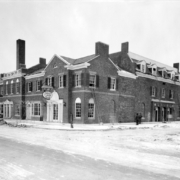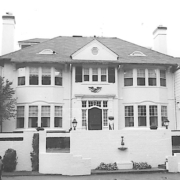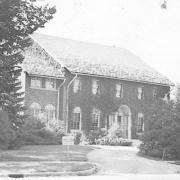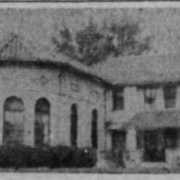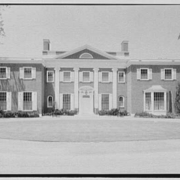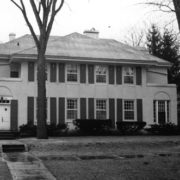Historical Architecture of Grosse Pointe – The Punch & Judy Theater
Last week we presented the story of 1009 Harvard in Grosse Pointe. The 2,993 sq ft brick French Colonial property was designed by prolific architect Carl R. Habermas and built by noted builder, R. C. Ranke. It was completed in 1940. Despite being built over 80 years ago the house, to date, has only had two owners.
This week we return to the Hill to continue our story of this historic commercial district. Over the past couple of weeks, we have explored the history of the Hill along with The Bronze Door restaurant. Now it’s time to look at where it all began with the Punch and Judy Theater. The theater, located at 17 Kercheval Avenue, opened in January 1930, to much fanfare. The opening not only marked the beginning of the theater, but of the Hill business district in general which then began to gradually spread north towards Muir Road as more and more business began moving in. Image courtesy of: Walter P. Reuther Library, Archives of Labor and Urban Affairs, Wayne State University (1930).
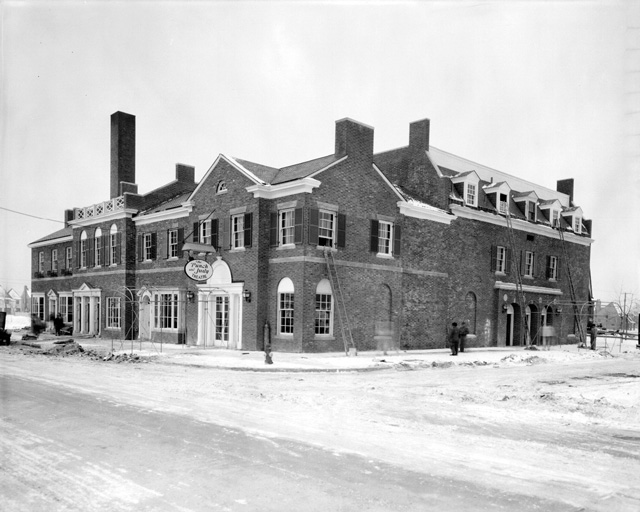
When the Punch and Judy Theater opened it did so ‘under the patronage of a cluster of Grosse Pointe’s most influential men, including Edsel Ford, Roy D. Chapin, and Lawrence B. Buhl, all of whom believed Grosse Pointe should have its own movie house’. The program on the day of the grand opening remarked, ‘the theater was dedicated to the citizens of Grosse Pointe “that you may meet, relax, laugh, and learn”’. Source: “Avenue of the Elite”, by Madeline McLaughlin – Heritage magazine, 1985.
At the time Grosse Pointe already had a popular movie theater – the Grosse Pointe Park Theater had been open since 1923. However, the opening of the new theater in Grosse Pointe Farms prompted a lot of interest from the public and from the media. An article in the Detroit News, published three days before the theater opened, explained:
A few glances are all that are necessary to realize that the Punch and Judy was designed with a homelike comfort as its chief attribute. There is nothing of the elaborate appeal of the standard movie house in its Early American outline. It is more a place to feel at home amid dignified and subdued coloring, modest lighting effects, and seating arrangements in harmony with the quiet atmosphere. Source: Detroit News, 1930.
An article in Heritage magazine, 1985, provides further details, ‘In the early days, one could make a reservation for the lounge upstairs rather than having to confront the crowd at the ticket widow. There was a doorman and a carhop to make movie going a more carefree experience. Frank Krueger managed the theater for the Goldburg family who owned It. Mr. Krueger ran a tight ship, making sure that there was no running up and down the aisles on Saturday afternoon, when the kids plied in to see such matinee idols such as Bette Davis in Of Human Bondage or Errol Flynn in Captain Blood. Mr. Krueger continued to make sure there was no smooching in the seats when these kids grew up and courted there’.
The brick building was designed by prominent local architect Robert O. Derrick who selected his favored Colonial style, thus giving the theater the look of a Virginia country manor rather than a traditional movie house. The exterior had a high roof, while shutters covered the windows – a popular trait with the Colonial architectural style. Meanwhile, an inconspicuous sign was suspended over the main entranceway displaying the sign of the new movie theater. Inside, the walls were plain, while the main lounge area featured wood paneling with gold borders. Pegged flooring and large fireplaces emphasized the formal architectural style. At the time the theater was one-tenth the size of larger theaters – there were 504 seats on the main floor and 96 on the balcony (the smoking “loge”). It is reported, at the time, the smoking “loge” inside the Punch and Judy Theater was the only legal smoking section in a movie theater in the State of Michigan – this resulted in a higher ticket price than the seats on the main floor. Source: A History of the Punch and Judy Theater by Carrie Jones. Images courtesy of: Walter P. Reuther Library, Archives of Labor and Urban Affairs, Wayne State University (1930).
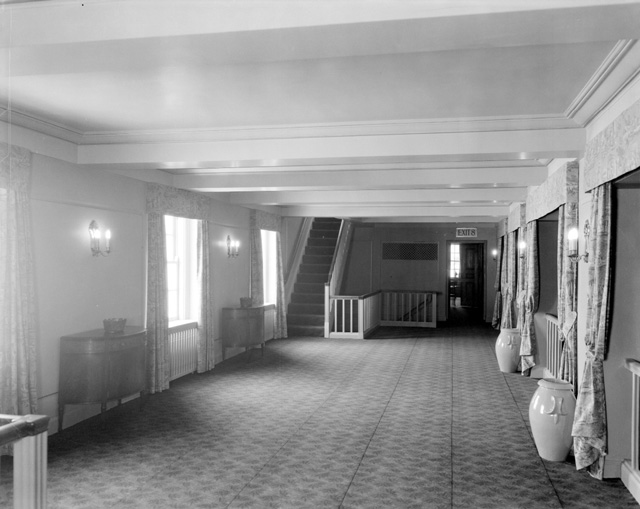
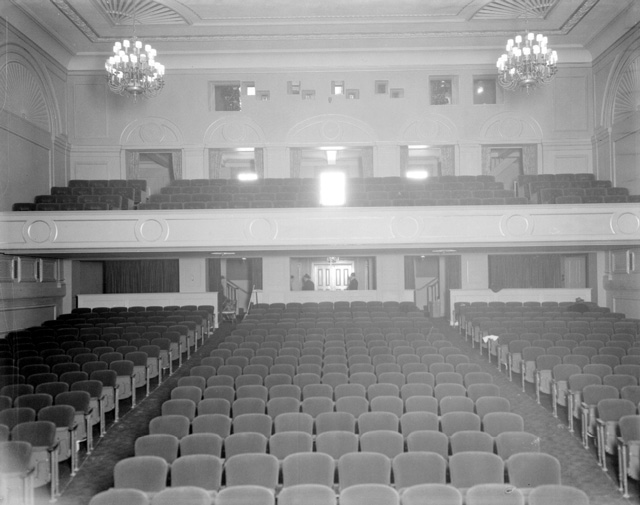
An article in the Detroit News (1930) described the care and detail that the theater’s builders had gone to ensure superior sound production:
Acoustical experts of the University of Michigan supervised the insulation of walls and arrangement of the projection and speaking apparatus. A layer of felt in the ceiling and the use of special materials assured the efficiency of the talkie equipment, which is the most modern to be had. Source: Detroit News, 1930.
The theater was also equipped with an organ along with both Vitaphone and Movietone sound apparatus. Later that year the Vitaphone system was removed when nationwide standardization of sound equipment adopted the use of optical soundtracks. The projection booth in the theater had two carbon arc projectors, at least one spotlight and a smaller projector for displaying lyrics on the screen during sing-alongs. Image courtesy of: Walter P. Reuther Library, Archives of Labor and Urban Affairs, Wayne State University (1930).
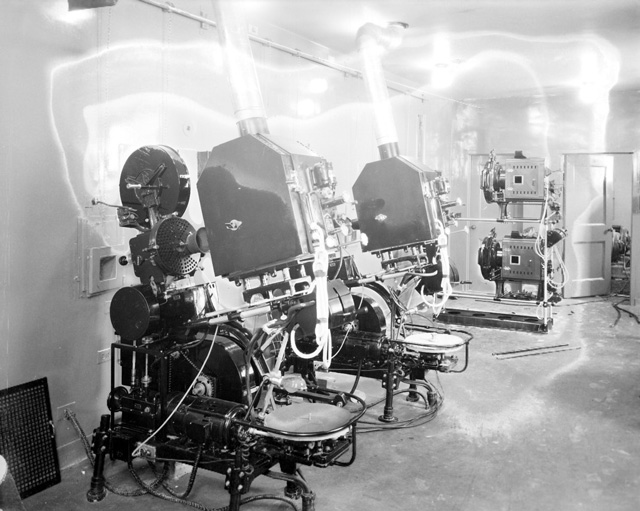
The article by Carrie Jones explains ‘the theater proved to be a popular place for matinees and became a leader in the area for matinees created for children. From 1930, until 1935, films were changed two times a week, with three performances daily, at 2:30, 7:30 and 9:00 pm. Ticket prices ranged from 25¢ for children (at all times), 50¢ for adults for matinees, 75¢ for evening shows, and $1.00 at all times for the reserved seats in the smoking “loge”’.
The Punch and Judy Theater received several upgrades during the 1940’s and 50’s to ensure the sound and projection equipment were kept up to date with the advancements in movie production, including – magnetic soundtracks, 70mm film, 3D and widescreen movies along with Cinemascope film. The 1940’s also saw several structural changes – a marquee was added, and the original square lobby was changed to a more rounded shape. During the 1960’s the building received a new awning, the front doors were replaced, red draperies were installed, the lobbies were re-carpeted, and the red seats were re-covered. Image courtesy of: Walter P. Reuther Library, Archives of Labor and Urban Affairs, Wayne State University (1966).

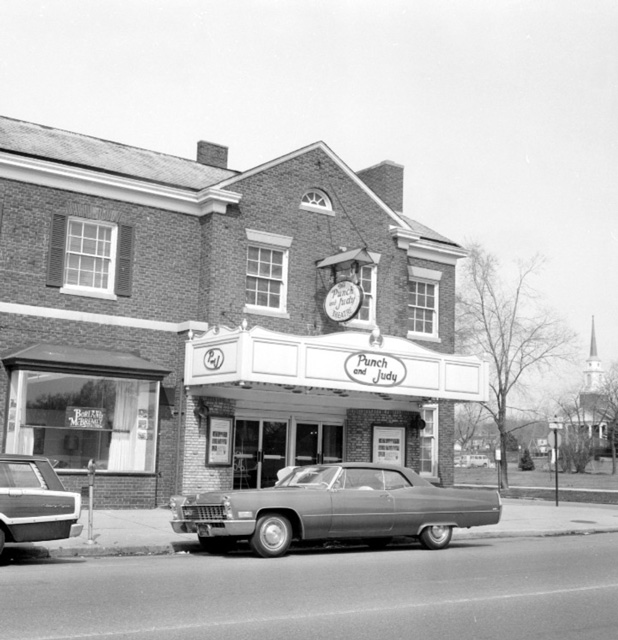
The 1970’s saw the theater move with the times – a concession stand was added in 1973, and an arcade was installed in the lobby. In 1977, the theater had new owners but closed shortly after due to financial loses.
The 1980’s began positively for the theater with a new owner – the Classic Film Theatre – taking over operations in 1981. However, by 1984 ‘some of the main floor seats had to be removed, the auditorium needed painting, the upstairs lounge was being used as a storeroom and the balcony was closed due to the partial collapse of the ceiling above it. The theater closed for good on September 16, 1984’. Source: A History of the Punch and Judy Theater by Carrie Jones. In 1986, the Punch and Judy Theater was renovated and converted to offices that opened in 1987.
Today the exterior of the building retains its original charm, with the lobby, in the office building, paying homage to the building’s historic past. Residents of Grosse Pointe who have lived in the community for years, fondly remember some of the wonderful films they watched at the Punch and Judy Theater.
*Photos courtesy of the Higbie Maxon Agney archives unless stated.
Written by Katie Doelle
Copyright © 2021 Katie Doelle

